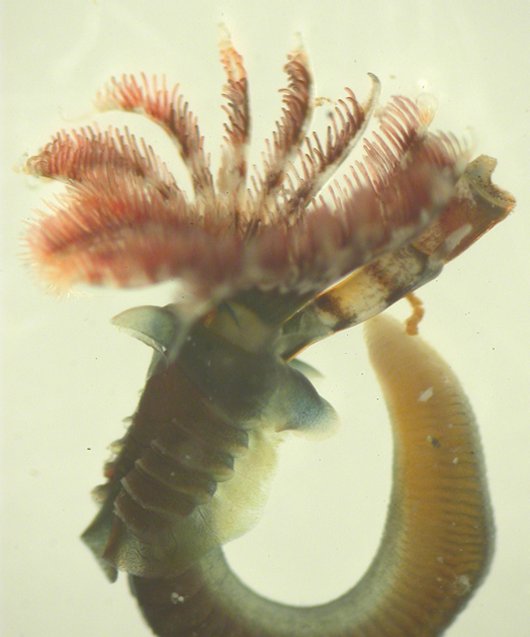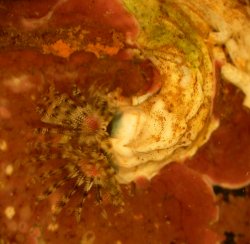The worm that turned evolutionary key

The Keelworm, widespread in the seas and tide-pools around Scotland and the rest of the UK, is unwittingly helping scientists at the University of St Andrews to understand the evolution of modern animals.
Analysis of over 2,000 gene sequences from a small segmented keelworm has helped to reveal some of the genetic complexity of the ancient ancestor from which 99 per cent of animals today descended.
The discovery brings us closer to understanding our links to the common ancestor which inhabited the earth 550 million years ago, and from which we evolved.
 Comparisons of patterns of gene retention in fruit flies and roundworms, traditionally studied as evolutionary links with our invertebrate ancestors, have found higher levels of gene loss – suggesting that the keelworm is in fact a closer link to our evolutionary origins.
Comparisons of patterns of gene retention in fruit flies and roundworms, traditionally studied as evolutionary links with our invertebrate ancestors, have found higher levels of gene loss – suggesting that the keelworm is in fact a closer link to our evolutionary origins.
Dr David Ferrier of the Scottish Oceans Institute, university of St Andrews, said:
“Our keelworm work is helping to show that important model organisms like fruit flies and nematodes have lost many of the types of genes that are present in ourselves and were in our invertebrate ancestors. So although the fly and nematode systems are hugely powerful genetic ‘tools’, there are plenty of ancient genetic processes that no longer have an equivalent in these models.
“We urgently need to develop further invertebrate model systems so that we can understand what genes these ancient ancestors had, and then how these genes work and have contributed to the evolution of the huge diversity of animal forms that we see around us today.”
This work was supported by the Biotechnology and Biological Sciences Research Council.
NOTE TO EDITORS:
DR FERRIER IS AVAILABLE FOR INTERVIEW ON 01334 463480 / MOBILE 07990544489, EMAIL [email protected]
The original paper is published in BMC Evolutionary Biology, and can be downloaded at: http://www.biomedcentral.com/content/pdf/1471-2148-9-240.pdf
For further information go to: http://biology.st-andrews.ac.uk/ferrier/
The Journal of Biology has published a review of the research, entitled ‘The gene Compliment of the Ancestral Bilaterian – Was Urbilateria a Monster?’. It is available to view at: http://jbiol.com/content/8/10/89
NOTE TO PICTURE EDITORS: AN IMAGE OF A KEELWORM IS AVAILABLE FROM THE PRESS OFFICE – CONTACTS BELOW.
Issued by the Press Office, University of St Andrews Contact Emma Shea on 01334 462 167
Category Research